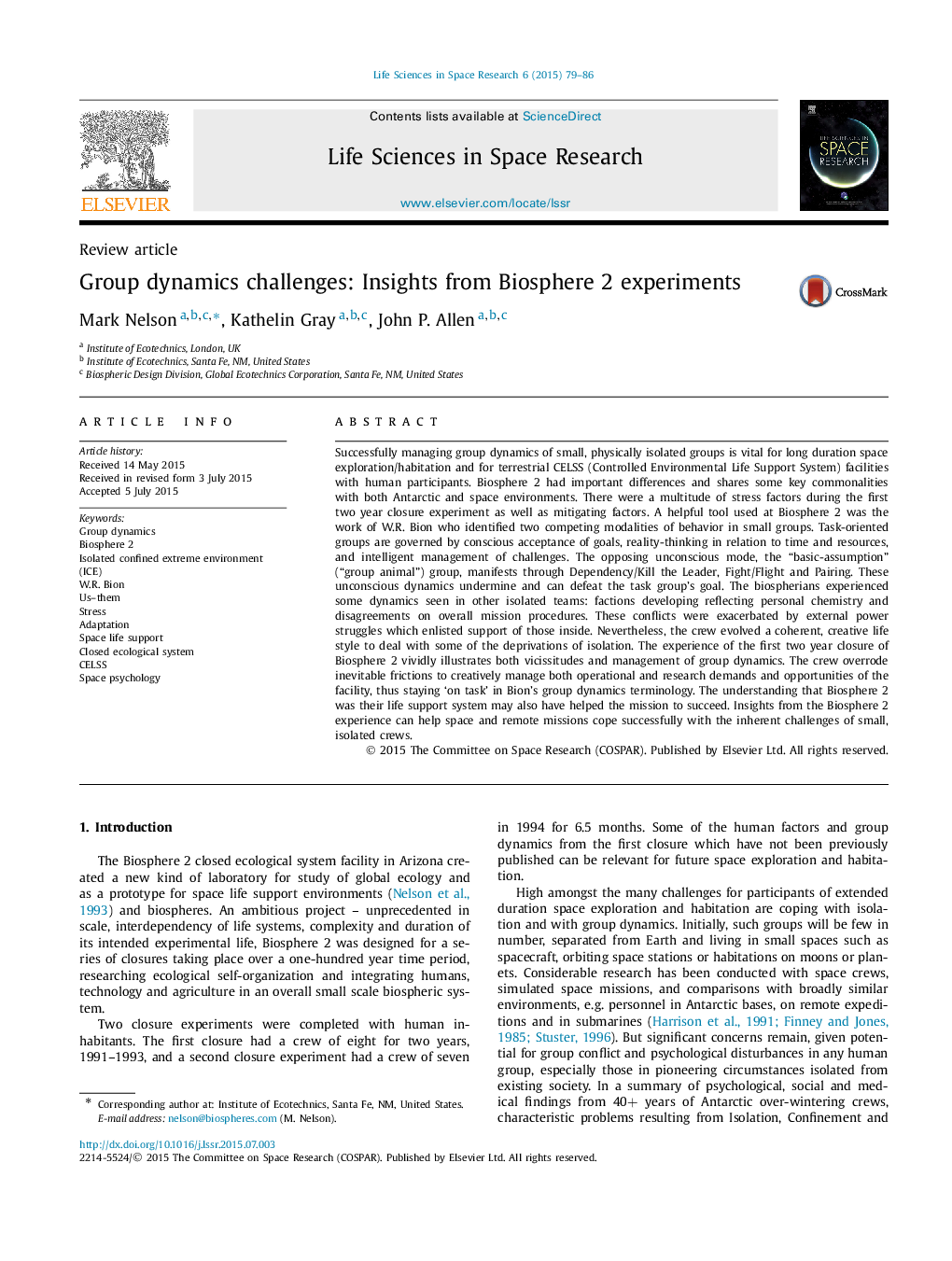| Article ID | Journal | Published Year | Pages | File Type |
|---|---|---|---|---|
| 8248033 | Life Sciences in Space Research | 2015 | 8 Pages |
Abstract
Successfully managing group dynamics of small, physically isolated groups is vital for long duration space exploration/habitation and for terrestrial CELSS (Controlled Environmental Life Support System) facilities with human participants. Biosphere 2 had important differences and shares some key commonalities with both Antarctic and space environments. There were a multitude of stress factors during the first two year closure experiment as well as mitigating factors. A helpful tool used at Biosphere 2 was the work of W.R. Bion who identified two competing modalities of behavior in small groups. Task-oriented groups are governed by conscious acceptance of goals, reality-thinking in relation to time and resources, and intelligent management of challenges. The opposing unconscious mode, the “basic-assumption” (“group animal”) group, manifests through Dependency/Kill the Leader, Fight/Flight and Pairing. These unconscious dynamics undermine and can defeat the task group's goal. The biospherians experienced some dynamics seen in other isolated teams: factions developing reflecting personal chemistry and disagreements on overall mission procedures. These conflicts were exacerbated by external power struggles which enlisted support of those inside. Nevertheless, the crew evolved a coherent, creative life style to deal with some of the deprivations of isolation. The experience of the first two year closure of Biosphere 2 vividly illustrates both vicissitudes and management of group dynamics. The crew overrode inevitable frictions to creatively manage both operational and research demands and opportunities of the facility, thus staying 'on task' in Bion's group dynamics terminology. The understanding that Biosphere 2 was their life support system may also have helped the mission to succeed. Insights from the Biosphere 2 experience can help space and remote missions cope successfully with the inherent challenges of small, isolated crews.
Keywords
Related Topics
Physical Sciences and Engineering
Earth and Planetary Sciences
Space and Planetary Science
Authors
Mark Nelson, Kathelin Gray, John P. Allen,
